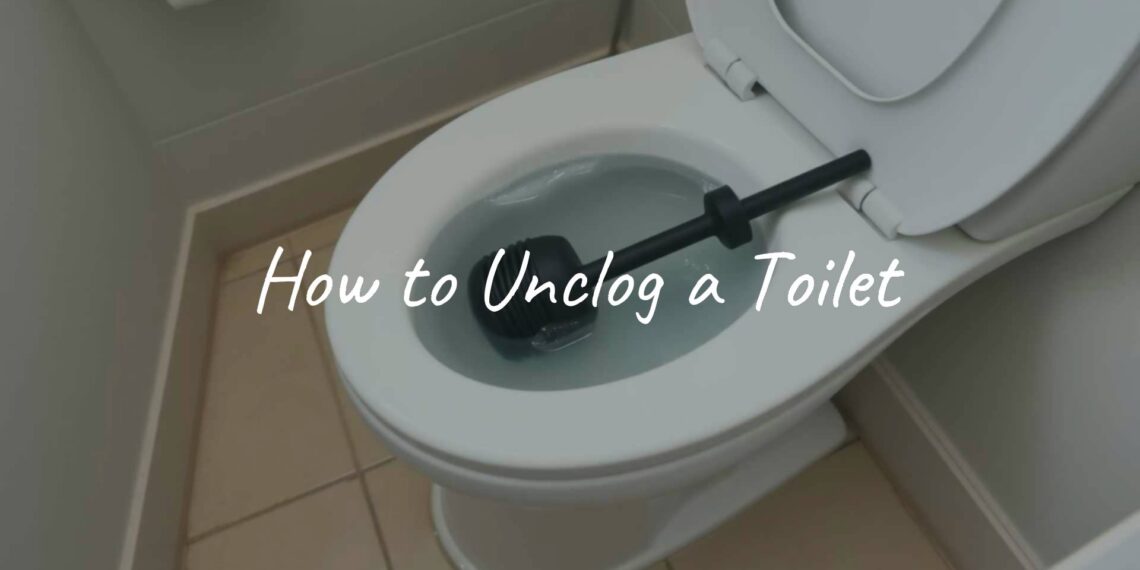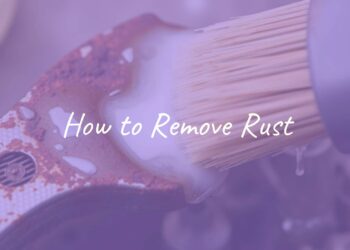A clogged toilet can cause a lot of stress, especially when it happens at the worst possible moment. That rising water in the bowl and that dreaded gurgling sound-many of us have been there. Before you call a plumber, know that you can usually fix a plugged toilet yourself pretty quickly. This step-by-step guide shows you the usual reasons for clogs, multiple ways to clear them out (with and without a plunger), and tells you when it’s best to ask a plumber for help. With some effort, you can get your toilet working again in just a few minutes.

Why Do Toilets Get Clogged?
Toilets are built to handle only certain materials: mostly human waste and toilet paper. If things like paper towels, wipes, or too much toilet paper go down, the toilet’s narrow drain can get blocked. Water then backs up in the bowl because it can’t flow through. Knowing what usually causes these blocks helps you avoid them and makes clearing them easier when they do occur.
Common Reasons For Toilet Clogs
Most toilet clogs happen for a few key reasons. Often, using too much toilet paper-especially extra-thick kinds-can cause a clog. Thick toilet paper or large amounts can get stuck, making flushing hard. Too much solid waste can also block the toilet, and these types of clogs are usually easy to clear with a plunger.
Sometimes, people flush things by mistake, like toys, makeup wipes, small objects, or hygiene products. These items don’t break down and can get stuck in the toilet’s bend or further down the pipe. In these cases, clearing the toilet is a lot trickier, often needing special tools or a plumber’s help.
Things You Shouldn’t Flush
It might feel like the fastest way to clean up, but don’t flush items like “flushable” wipes (they usually don’t break down), paper towels, cotton balls, dental floss, feminine products, hair, or other household trash. These do not dissolve in water, and they can swell up or clump together, blocking your pipes. They also cause bigger problems in main drain lines, potentially blocking other plumbing fixtures throughout your home.
| Item | Why Not? |
|---|---|
| Paper towels | Don’t break apart like toilet paper |
| “Flushable” wipes | Often do not disintegrate |
| Feminine products | Absorb water, swell up and block pipes |
| Cotton balls/swabs | Clump together, create plugs |
| Dental floss | Can wrap around other debris |
| Hair | Does not break down, collects in pipes |
How to Stop Toilet Overflow Right Away
If you see water starting to rise, act quickly to avoid a big mess. Your goal is to stop more water from entering the bowl so you can clean up and start fixing the problem without water spilling onto the floor.
What to Do if Water Is Rising
- Don’t flush again. Flushing usually makes things worse and could lead to an overflow.
- Open the tank lid. At the back of the toilet, carefully lift the lid and find the rubber part at the bottom called the “flapper.” Press it down to stop water from leaving the tank.
- Turn off the water. Find the water shut-off valve (usually a small handle on the wall behind the toilet), and turn it right (clockwise) until it stops. This cuts off the water supply, so no more water can fill the bowl or tank.
How To Unclog A Toilet With a Plunger
A plunger is usually the best way to clear a clogged toilet. The design and how you use it matter a lot. Using the right plunger and method gets you the best results.
Picking the Right Plunger
Use a “flange plunger” – it has a soft extension at the bottom that fits into the toilet’s hole. This creates a solid seal for stronger suction. Regular, flat plungers work better for sinks. Before plunging, warm the rubber part of the plunger in hot water to make it softer, so it fits better and seals tight. Wear rubber gloves for cleanliness.
How to Use a Plunger the Right Way
- Make sure there’s enough water in the bowl to just cover the plunger’s head. If there isn’t, add some water from a bucket.
- Place the plunger over the hole at an angle so it fills with water, not air.
- Push down gently at first to get rid of air, then use firm, quick up-and-down movements, keeping the seal. Do this 7-10 times (sometimes up to 20).
- Watch for the water level to drop or a bubbling sound-these show the clog is clearing.
- If needed, adjust the plunger to keep the seal and plunge again.
- When you see the water draining as normal, turn the water valve back on, if you turned it off, and do a test flush.

Unclogging a Toilet Without a Plunger
If you don’t have a plunger, or if it’s not working, try these other home methods using items you probably have around.
Using Hot Water and Soap
- Scoop out some water from the bowl if it’s almost full so you have room to work.
- Add about half a cup of dish soap into the bowl-it makes things slippery and helps loosen the clog.
- Heat a gallon of water until it’s hot but not boiling (boiling water can crack your toilet). Carefully pour it into the bowl from waist-high. The hot water and soap can dissolve or loosen the clog.
- Wait 20-60 minutes. After that, try flushing.
Other Household Tools
- Wire coat hanger: Straighten it, leaving a small hook on one end. Carefully push this into the toilet drain and move it around to break up the clog. Don’t scratch the porcelain.
- Toilet brush: Use it like a plunger if you must, pumping it up and down in the hole. You can also use the handle as a makeshift drain stick. Be gentle to not damage the toilet.
Should You Use Chemical Cleaners?
Avoid pouring drain cleaners in your toilet. These chemicals can be very dangerous to your skin and lungs and can eat away at pipes and rubber seals. If they don’t clear the clog, you’ll be left with a bowl of hazardous liquid, making things harder and riskier for both you and any plumber who comes to help. Stick with safer, more natural methods like hot water, dish soap, or mechanical tools instead.
Trouble? What To Try If Plunging Fails
If you’ve tried plunging and other basic tricks and your toilet is still blocked, the problem may be deeper. Time to consider the next steps or get professional help.
Using a Toilet Auger (Plumbing Snake)
A toilet auger (sometimes called a “closet auger”) is a long, flexible tool with a twist handle and a tip for grabbing or breaking through clogs. Put the end in the drain, turn the handle, and push gently. The tip can break up the clog or pull it back out. There are longer, thicker versions for deeper clogs-use care to not force these and damage your pipes.
Signs You Need a Plumber
- The blockage won’t move after several tries with a plunger and auger.
- Flushing the toilet causes water to back up in the bathtub or shower. This likely means your main drain is blocked.
- Toilet keeps clogging again and again, even after you clear it, which could mean a bigger problem down the line.

Plumbers have special tools like cameras to look inside pipes, as well as powerful augers and water jets for tough clogs. If you’re stuck, calling a plumber could save you time and prevent possible damage.
What NOT To Do When Unclogging a Toilet
Some actions can make the problem much worse or damage your home.
Stay Away From Chemicals
Don’t reach for a chemical drain opener. These products are tough on pipes, can eat away at PVC and rubber, and expose you to dangerous fumes. They can cause leaks and, if the clog remains, leave you with a bowl full of dangerous liquid. Use plungers, augers, or safer homemade solutions first.
Do NOT Keep Flushing
Flushing a clogged toilet over and over usually means water spilling onto your floor. Each extra flush just adds more water to the toilet, which can create a very messy overflow, water damage, and costly repairs. If you see the water won’t drain, stop flushing right away and use the shut-off valve before you try any cleaning techniques.
When Is It Time to Call a Plumber?
Most toilet clogs are easy to clear yourself. But sometimes, outside help is the best move-both for your sanity and for your home’s plumbing system.
If Your Toilet Keeps Clogging
If your toilet keeps getting clogged, or if the same problem comes back soon after you fix it, there may be a bigger issue. Repeated clogs can mean objects stuck in your system, worn parts inside the toilet, or a partial blockage deep in your pipes that only a professional can fix. A plumber can inspect everything, possibly using a camera, and find out what’s really happening.
Water Backup in Other Drains
If flushing causes water to come up in your tub, shower, or other drains, your main drain line is probably blocked. This is a major problem that can’t wait, since it may lead to sewage backing up in your home. Main drains sometimes get blocked by tree roots, damaged pipes, or old buildup. You’ll need a plumber with the right equipment to find and clear these serious clogs safely.
How To Prevent Toilet Clogs In The Future
The best way to deal with a clogged toilet is to avoid it happening at all. Good habits and regular care make a big difference.
Smart Flushing Habits
- Only flush toilet paper and human waste. Everything else goes in the trash.
- Be careful with the amount of toilet paper you use. If you need lots, flush twice instead of risking a clog.
- If you have kids, keep an eye on them. You might want to use a toilet lock to stop accidental flushing of toys or objects.
- For older toilets, hold down the flush lever for a full, strong flow.
Easy Maintenance To Keep Toilets Working Well
- Every month or so, pour hot (not boiling) water and a good squirt of dish soap into the toilet. Let it sit for at least 20 minutes, then flush.
- Another method: pour a cup of baking soda into the toilet, then add two cups of vinegar. It will fizz and help break up early blockages. Wait 30 minutes, then flush.
- Clean toilet jets and holes under the rim to keep the flush strong. Mineral buildup can slow the flow over time.
- If you have hard water, use a descaling cleaner to prevent minerals from clogging the parts that help the toilet flush.
These habits can help you avoid sudden, stressful clogs and keep your bathroom neat and functional.
















![What to with Scrap Metal? [infographic]?](https://facts-homes.com/wp-content/uploads/2019/07/645413-POPYOV-391-120x86.jpg)





